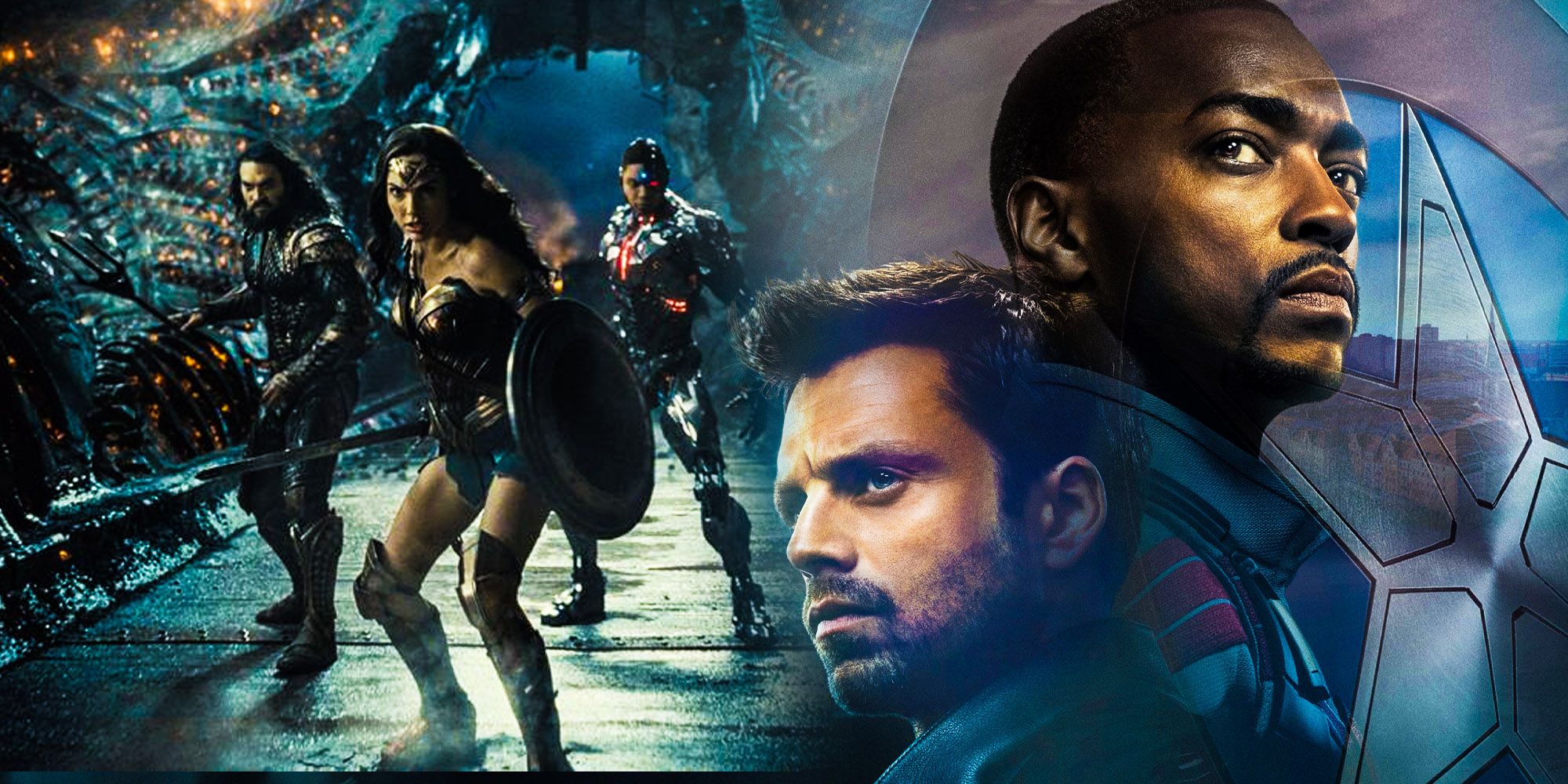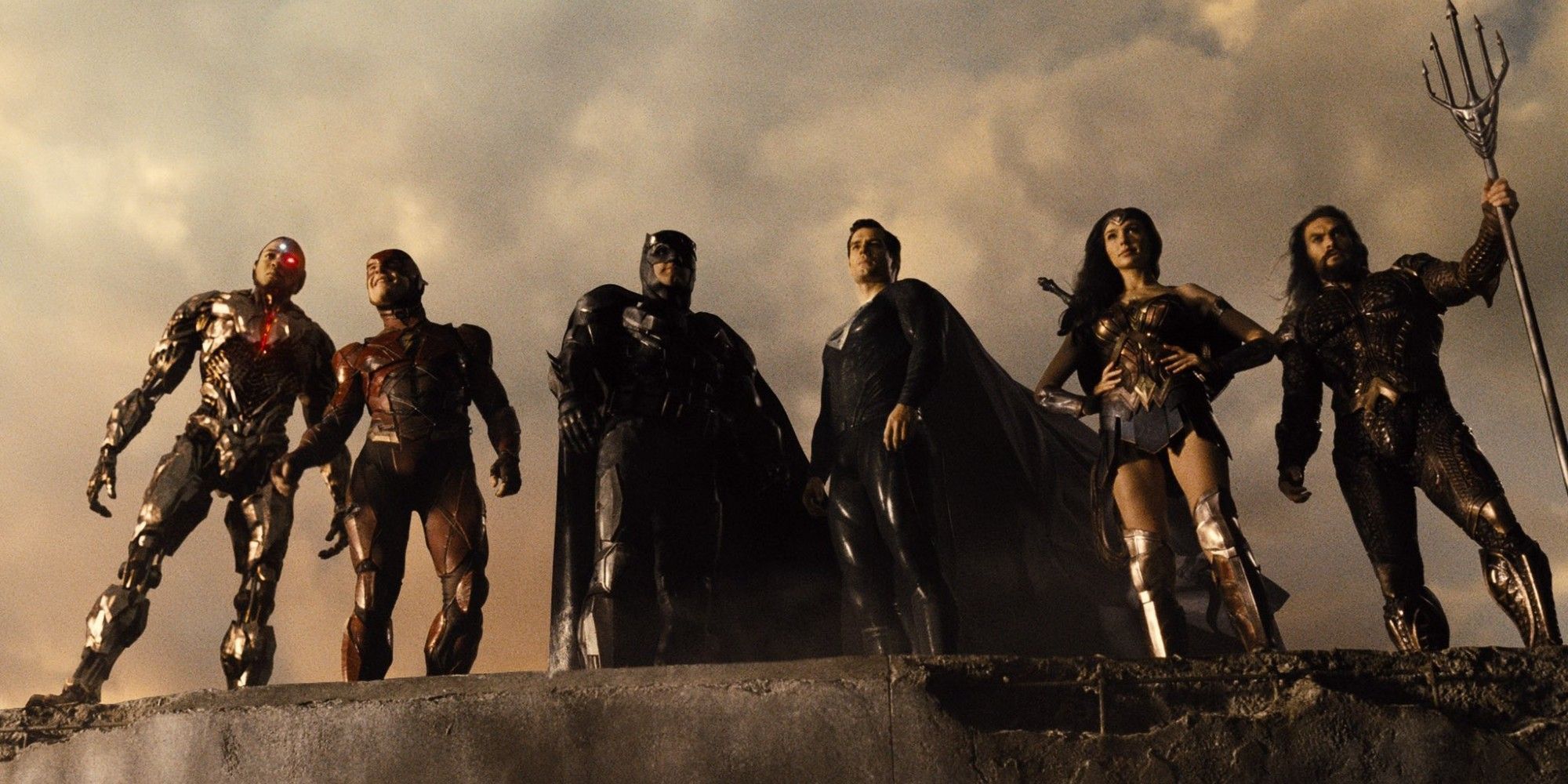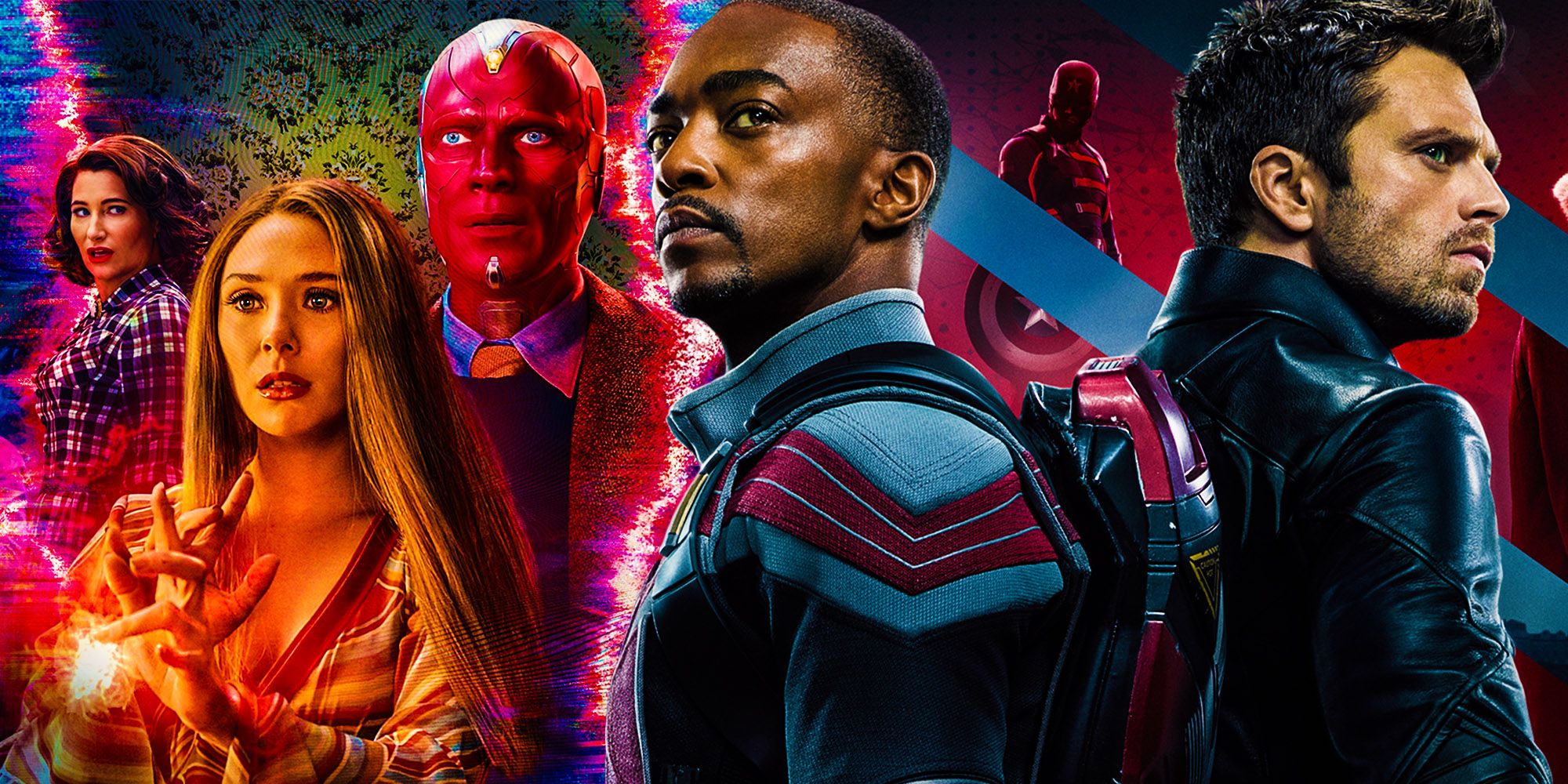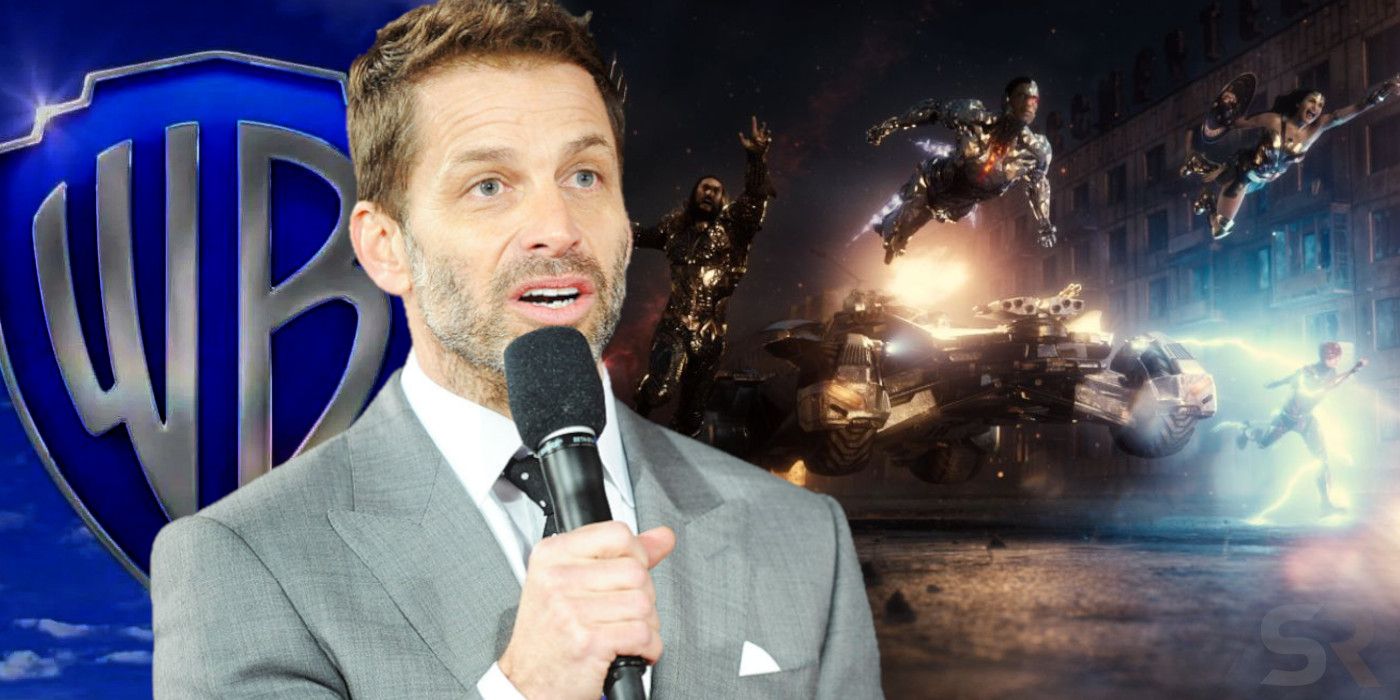With Zack Snyder's Justice League and the first episode of The Falcon and the Winter Soldier releasing on the same weekend, comparisons were inevitable, but those comparisons are wrong. After years of sustained and often divisive bombardment from Snyder's fans, Warner Bros. finally relented and greenlit the fabled "Snyder Cut," which, as it turns out, wasn't an existing cut at all, but an entirely new production that had to be assembled and finished to the reported tune of $70 million. Snyder famously parted ways with Warner Bros. while shooting Justice League after the tragic death of his daughter; WB brought in Joss Whedon to finish it but demanded so many changes and reshoots that the resulting theatrical cut was a historically bad mess. Zack Snyder's better but still semi-unfinished version finally recently hit HBO Max.
Simultaneously, the first episode of Marvel's latest Disney+ series released with the premiere of The Falcon and the Winter Soldier. The series is set to follow the exploits of two Marvel characters who have to this point been in supporting roles and largely unexplored in Sam Wilson, a.k.a. Falcon and Bucky Barnes, a.k.a. the Winter Soldier. It's a stark departure from the experimental weirdness of Marvel's first series, WandaVision, with Falcon & Winter Soldier looking to be an equally deep character study but still one that falls within the more traditional Marvel lanes first paved by Captain America: The Winter Soldier.
Understandably, once both were released, comparisons were made between the two in regard to "success," with viewership numbers being tossed around on social media as definitive proof that one had succeeded over the other; Justice League reportedly generated 1.8 million viewers while Falcon & Winter Soldier's premiere generated 1.7 million viewers according to analytics firm Samba TV. However, comparing the Snyder Cut and the Falcon and Winter Soldier premiere is inaccurate, failing to provide context while not giving the full picture. It's due to a number of reasons, but it really boils down to the fact that outside of them both being comic book properties, they could not be less alike in regard to the context around them. Here's why pitting one against the other is a false equivalence.
Online Buzz Isn't Necessarily A Reliable Indicator Of Success
One of the arguments being made in support of the HBO Max movie being a greater success than the Disney+ premiere episode was that the Snyder Cut got more buzz online. But while buzz can be measured - and there are some data analytics firms that do it quite well - when the vast majority of fans talk about "buzz," they're referring to what they see on their own social media timelines and hear among their own circles.
But the very nature of social media's echo chamber effect and algorithms evolving to show people more content of the kind they engage with and hiding the rest, what someone sees online on their social media isn't necessarily an accurate picture of how the majority of moviegoing audiences or the general public feels about something. Social media isn't and has never been meant to give its users an accurate, unbiased view of the world but a world that is tailored to each individual. It's not only reasonable to assume that someone who was a proponent of the #ReleasetheSnyderCut movement would see an awful lot of people sharing that same mindset; that's how social media is designed to work. Same with Marvel fans; they're likely to see plenty of buzz for the start of Sam and Bucky's adventures that Zack Snyder fans do not with their social media feeds being so overwhelmingly slanted toward pushing DC content to the top. Thus, a trending hashtag does not equate to real-world box office dollars or conversion to streaming audience numbers, because box office dollars and real-world streaming numbers rely on the very thing hashtags don't: the general audience.
The more reliable indicator of a movie or TV show's success is how general audiences outside the most loyal fanbase feel about something. Do they even know this specific movie or TV series is coming out? If so, do they plan on watching it? And are they interested enough in a specific release to sign up and pay for a new streaming platform? If the answer to at least two, if not all three of those questions is yes, then it's a fair assumption that that new release has broken beyond its usual audience and has picked up viewers who otherwise wouldn't watch. A movie's marketing blitz can put it on the radar of a general audience; a TV series has more time to find viewers who weren't aware of the initial premiere. There are pros and cons for each.
The Reception Of Movies & TV Shows Unfold Completely Differently
Even though things have dramatically changed in the time of COVID-19, the reality is that movies make on average 25% of their domestic box office (or in this case, the majority of their streaming platform viewers) in the first weekend, and big-budget tentpoles like comic book movies can make even more. Black Panther, for example, made almost 29% of its total domestic box office in its first weekend. With so many studios competing to put their blockbusters out and the majority of them still being crowded into the summer blockbuster season and over the holidays, studio tentpoles really only have one weekend, maybe two max, in which they are uncontested and have no competition. It's why the marketing campaigns for studio releases turn into an all-out blitz in the last two weeks leading up to release. With so much riding on the first weekend, everything is front-loaded. Though streaming platform releases, in theory, offer audiences the opportunity to watch new releases at their leisure, that first-weekend mindset still exists.
Television shows, on the other hand, often take time to ramp up and find an audience, even for series with proven brands like Marvel. Take, for example, WandaVision, which ended up being one of the most popular shows of the year. Still, it took about a month for it to hit its stride. Parrot Analytics (via Forbes), a company that measures audience attention by combining data from social media, fan ratings and piracy data to determine audience demand, WandaVision bounced around between its #7 and #35 spots, with its popularity and audience not hitting a strong upswing until episode 3 and not reaching the number one spot worldwide with both Parrot Analytics and on most-watched streaming shows lists until episode 5, more than a month after release.
With movies being front-loaded in the first weekend and TV series being episodic, it's not accurate to compare one episode of a TV series to a movie release. Even if Justice League had doubled or tripled the figures for Falcon & Winter Soldier's premiere, it's entirely likely that by the end of the first season, the Marvel series will have had more viewers overall. But even those first weekend numbers aren't quite as reliable as one might think.
Streaming Viewership Numbers Are Notoriously Unreliable
It's notoriously hard to get clear viewership numbers from streaming platforms, which measure the success of their movies and TV shows by private in-house metrics and couch it in vague terminology that sounds great but is ultimately meaningless. For example, Disney+ said The Falcon and the Winter Soldier was its most-watched premiere ever on the platform but provided absolutely no numbers to put that statement into context. While Samba TV confirmed this statement, the exact figures weren't released. Meanwhile, HBO Max didn't even report on Zack Snyder Justice League's performance at all.
The more accurate metric is the aforementioned one from Samba TV of Justice League's 1.8 million and Falcon & Winter Soldier's 1.7 million as it measures data from Smart TVs directly. Taking those numbers at face value, the Justice League did indeed outperform Steve Rogers's best buddies. However, even those numbers are misleading as Samba TV counts it as a view if someone watches at least five minutes of a movie or episode, not the entire thing. After the announcement of initial figures, Samba TV drilled down on the data and a more accurate picture emerged: Of the 1.8 million people who "watched" the new cut of Justice League, only a third watched the 4-hour movie in its entirety, or roughly 600k people. With Falcon & Winter Soldier's premiere being under 50 minutes in total, it's safe to guess the majority of its 1.7 million viewers watched the whole episode. By that metric, less than half the people who watched the entire premiere of The Falcon & The Winter Soldier watched Zack Snyder's Justice League in its entirety. It should be noted Disney+ has an audience of almost 95 million subscribers to HBO Max's almost 40 million, giving the Marvel series twice the potential eyeballs of the HBO Max movie; from one angle, this gives something debuting on Disney+ a clear advantage. On the other hand, considering enticing people to sign up for HBO Max was the end goal of the Snyder Cut all along, it's also fair to point out the growth of HBO Max vs. Disney+ has been far slower in the same amount of time from their respective launches.
In the end, audiences will likely never truly know how many people watched Zack Snyder's Justice League opening weekend, and certainly not how many people subscribed to HBO Max for it, which was Warner Bros.' real goal in greenlighting it in the first place. Conversely, until Disney+ releases exact numbers instead of general statements, it's impossible to truly know the success of a series like The Falcon and the Winter Soldier. Finding any concrete numbers for either requires cobbling together and comparing data from third parties like Samba TV. In the end, it just doesn't make sense to compare the two in terms of surface numbers as they're two wildly different pieces of content and the criteria measuring success are different for each company.




